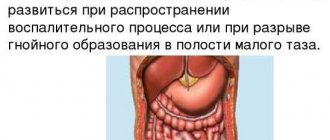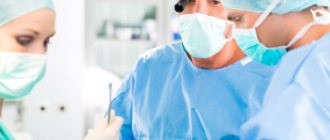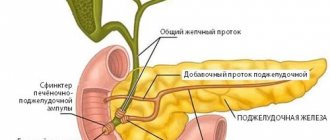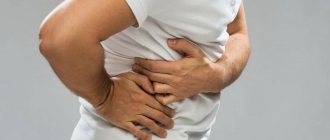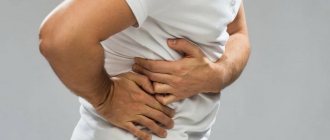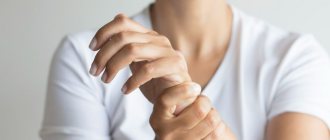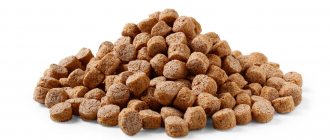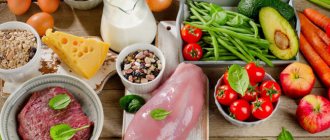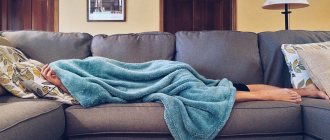Author
Anna Shelestun
Checked by an expert
Tatyana Eliseeva
There are many conditions that can lead to cholestasis - stagnation and reduction of bile flow. In this case, the digestive fluid does not enter the small intestine, does not break down fats and does not remove toxins from the body. This leads to digestive problems and accumulation of toxins. Many factors can trigger the disease, but poor diet and unhealthy lifestyle are the main reasons. Fortunately, illness can be avoided if you adjust your diet in a timely manner.
Why does the body need bile?
The greenish-yellow liquid mainly consists of cholesterol, bile acids and bilirubin, a breakdown product of hemoglobin. Also contains water, salts (potassium, sodium), copper and other metals. [1] It is the main antiseptic in the body and performs many functions:
- removes toxins into stool to prevent toxic overload;
- stimulates the secretion of water in the large intestine, improves motility and prevents constipation;
- distributes antioxidants and immunoglobulins throughout the intestines;
- has an antimicrobial function and prevents the development of dysbacteriosis;
- neutralizes stomach acid for the functioning of pancreatic enzymes.
If these processes are disrupted, there is a constant feeling of fatigue, a white or yellow coating on the tongue, bad breath, cravings for sugar and excess weight gain in the abdominal area. [2, 3] The problem cannot be ignored, because disorders can lead to dangerous liver pathologies, especially if biliary dyskinesia is diagnosed. You need to start with changing your diet - even doctors admit that a proper diet is often more effective than medications. [4]
Bile flow sequence
- the liver produces 500–600 ml of bile daily;
- half of the fluid excreted between meals enters the small intestine;
- the rest is diverted to the gallbladder for storage, where 90% of its water is absorbed into the bloodstream - this makes the reserves very concentrated;
- when food with fats enters the small intestine, a series of hormonal and nervous signals causes the bile duct to contract and the sphincter of Oddi to relax and open so that bile flows to the food and performs digestive functions;
- about 90% of bile acids are reabsorbed into the bloodstream through the walls of the small intestine, after which the liver removes them from the blood and re-releases them into bile - the components go through this cycle 10-12 times a day;
- a small amount of acid reaches the colon, where it is broken down by bacteria - some is reabsorbed, and some is excreted in the stool, giving it a dark color. [5]
General rules
Bile is continuously secreted by the liver, between meals it accumulates in the gallbladder, and after meals it enters the duodenum.
Disorders of the biliary system (dyskinesia) are associated with uncoordinated, excessive or insufficient contraction of the gallbladder, ducts and ductal sphincters. Stagnation of bile in the gallbladder is caused by dyskinesia of the hypotonic type, in which there is insufficient reduction of bile, and a small amount of bile enters the digestive tract, which disrupts the functioning of the gastrointestinal tract (intestinal motility is inhibited, the absorption of vitamins , calcium , iron , which in turn leads to the development various diseases.
This condition is functional and can be caused by constant consumption of fatty and spicy foods, breaks between meals, nervous experiences, hormonal disorders ( menopause ) and diseases of the gastrointestinal tract. However, functional disorders can contribute to the appearance of organic pathology of the liver, pancreas, biliary system or duodenum. Stagnation of bile can cause an inflammatory process in the gallbladder - dyskinesia in most cases precedes cholecystitis , since prolonged disturbances in bladder emptying lead to excessive growth of pathogenic flora in the intestine, which leads to infection of the gallbladder.
cholesterol content . In the bladder, the process of bile thickening occurs, and it becomes more saturated with cholesterol. It can be said that hypotonic dysfunction promotes the loss of cholesterol crystals. At the initial stages, ultrasound reveals thick bile (biliary sludge), which indicates a violation of its physicochemical properties. During this period, it is important to normalize bile secretion; if the changes are not eliminated, the formation of microliths begins.
Olive oil
One of the treatment methods is to cleanse the bile ducts and gallbladder in a medical facility by duodenal lavage with warm mineral water or the administration of a 20% sorbitol solution. This procedure reduces spasm of the sphincters and increases the flow of bile. You can carry out so-called “blind probing” at home once a week. To carry it out, use olive oil (drink 30 ml on an empty stomach) or xylitol (20 g of powder per 50 ml of water). After consuming them, the patient should lie down in bed with a heating pad applied to the liver area. It is forbidden to perform tubing if there are stones in the bladder or ducts, since the procedure may dislodge stones that will cause blockage of the ducts.
If there is poor outflow of bile, the patient is bothered by constant aching pain in the right hypochondrium, which can intensify or weaken. Nausea and vomiting , constipation , bitterness in the mouth , weakness and fatigue are also noted
To eliminate stagnation, choleretics ( Holosas , Holagol , Allochol , Cholenzym , Liobil , Decholin , Biliton , Kholamine , Suprakol ) are prescribed, which stimulate the bile-forming function of the liver and cholekinetics, which increase the tone of the bladder ( Sorbitol , Mannitol , Xylitol , Berberine sulfate (barberry leaf extract) , Flamin (immortelle extract), Holosas (rose hip extract) Treatment necessarily involves a balanced diet.
A special diet has been developed for stagnation of bile in the gallbladder - this is a variant of Table No. 5 Diet No. 5L/F (lipotropic-fat). It is aimed at stimulating bile secretion, improving bile circulation and intestinal motor function. It also has a lipotropic effect (prevents fatty liver) and helps remove cholesterol from the body. It is prescribed not only for hypomotor dyskinesia, but also after cholecystectomy in the presence of bile stasis syndrome.
This is a complete diet with a physiological content of proteins, carbohydrates (simple carbohydrates are limited), but a high content of fats (due to vegetable ones containing polyunsaturated fatty acids) and enriched with lipotropic substances.
Basic principles of nutrition:
- Vegetable oils in the diet make up 50% of the total amount of fats; if calculated more accurately, their amount should be 1.0-1.2 g per kg of the patient’s weight.
- Contains lipotropic products (cottage cheese, egg whites, fish, lean meat).
- A large number of vegetables, fruits and wheat bran have been introduced.
- Food is cooked in water (steam) and baked; frying is excluded.
- Grinding food is not necessary.
- Fractional meals (up to 5-6 times).
- Salt is limited to 8 g.
- Liquids up to 1.5-2 liters.
- Easily digestible carbohydrates (sweets, sugar, honey, jams, preserves), which cause bile stagnation, are limited.
- Extractives and cholesterol, spices, whole milk, and animal fats are limited.
As already mentioned, this condition requires frequent and split meals (this improves the flow of bile), as well as including choleretic foods in the diet so that bile enters the intestines in a timely manner. After all, the main function of bile is digestive. The main components of bile are involved in the digestion of fats, making them available for further action by pancreatic lipase. The excretory function is also important (removal of bile pigments, excess cholesterol, bacterial toxins, heavy metal salts and drug metabolites from the body).
List of products that have a choleretic effect:
- Vegetable oils. They are rich in polyunsaturated fatty acids, phospholipids, vitamin E.
- Unsaturated fatty acids (arachidonic, linoleic) are part of cell membranes, help normalize cholesterol metabolism, participate in the synthesis of prostaglandins, which dilute bile, and increase the contractility of the gallbladder.
- It is important to use vegetable oils without heat treatment for salad dressings. Eating vegetables with vegetable oil gives a double effect; moreover, it is safe to use compared to consuming oil with spoons (contraindicated in case of cholelithiasis).
- Almost all vegetables, fruits, and berries stimulate bile secretion and also relieve constipation. This point is important, since daily bowel movements have a tonic effect on the bile ducts. The most pronounced effect is found in oranges, avocados, tangerines, melons, watermelons, prunes, pears, lemons, and among vegetables - dill, rhubarb, spinach.
- Juices - cabbage, beetroot, lingonberry.
- Wheat bran (30 g per day). They are steamed with boiling water and, once swollen, added to all dishes, 2 tablespoons three times a day. Bran improves the flow of bile and reduces the likelihood of stone formation, since it reduces the cholesterol content in bile.
- Egg yolks.
- Turmeric.
This list of choleretic food products can be supplemented with herbs that enhance contractions and eliminate stagnation of bile: calamus, barberry, lingonberry, immortelle, oregano, coriander, dandelion, knotweed, rowan, caraway, thyme, chicory, rose hips, chicory.
Healing herbs
It must be remembered that choleretic products must be included in the diet carefully, taking into account their tolerance. This is especially true for gallstone disease. If consuming them causes pain or increases bitterness in the mouth (which can be observed in the presence of cholecystitis), then this product is excluded from the diet.
Sometimes, if the bladder is insufficiently emptied, a magnesium diet is recommended, which is based on Table No. 5 , enriched with products containing magnesium: wholemeal bread and bran bread, wheat bran products, buckwheat and millet cereals, bran decoction, vegetables and fruits, dried fruits.
Typically, biliary dyskinesia of the hypotonic type is accompanied by constipation , in this regard, Diet No. 3 with an increase in the amount of choleretic products can be effective. This is a complete diet that can be constantly followed and includes foods that enhance intestinal motility and bowel movements (vegetables, fruits, baked goods with bran, cereals, fermented milk drinks, bran.). As you can see, the composition of the diets is very similar.
Also excluded are products that increase fermentation and rotting (fried foods, legumes, carbohydrates, fatty foods). On an empty stomach it is recommended to drink water with honey, juices, and at night: kefir, infusions of dried fruits (prunes, dried apricots) and then eat steamed fruits and fresh fruits.
The role of bile in the body
Bile plays one of the most important roles in the digestion process. It is involved in the absorption of fat-soluble vitamins, the processing of fats and is a kind of antiseptic that helps prevent putrefactive and fermentative processes in the intestines.
However, sometimes, for a number of reasons, it happens that the body does not produce a sufficient amount of this secretion, and, as a result, a disruption of the gastrointestinal tract occurs. In this case, a person should seek medical help and also enrich their diet with choleretic products.
In addition to the fact that they improve the process of bile production, such products prevent its stagnation.
Authorized Products
- Butter, olive, corn, flaxseed, sunflower oil. The ratio of animal and vegetable fats should be 1:1. A prerequisite is that all oils are introduced into the finished dish in their natural form. It is natural vegetable oils that have not undergone heat treatment that cause the production of cholecystokinin , which stimulates the formation of bile.
- Wheat bread with bran, rye. Only stale bread is allowed; biscuits, whole grain bread and bran bread are allowed. For the whole day: 150 g of wheat bread and 100 g of rye bread are allowed.
- Soups with vegetable broths (from cereals, vegetables or noodles). You can eat borscht and cabbage soup, beetroot soup, and fruit soups.
- Lean beef, rabbit, chicken, veal. You can boil them and make beef stroganoff from boiled meat; you can bake them after boiling. Serve in pieces or chopped (steamed or baked meatballs, cutlets, meatballs and quenelles).
- Baked lean fish, fish stuffed with vegetables, steamed and baked fish cutlets, soufflés and quenelles.
- Cereal dishes include crumbly porridges made from rice, buckwheat and oatmeal, viscous semolina, and pasta.
- Fermented milk products should be chosen as low-fat. It is recommended to consume low-fat cottage cheese daily (in its natural form and as part of dishes). Milk and sour cream are added only to dishes.
- Eggs are allowed to be eaten as an omelet or soft-boiled.
- Various vegetables in baked, boiled or stewed form, salads from fresh vegetables with vegetable oil, vegetable caviar, puree of carrots, pumpkin, green peas. Mainly the diet should contain cabbage of all varieties (if poor tolerance is limited to fresh white cabbage), beets and carrots, pumpkin, dill, parsley.
- Sour cream, vegetable and milk sauces are allowed. You can bake fish, meat and vegetables with sauces.
- Fruits and berries should be chosen that are not acidic and consumed fresh and in the form of compotes, jelly, fruit drinks, and infusions.
- Sweets are limited - marmalade, honey, jam, sugar (30 g per day).
- Drinks: rosehip infusion, vegetable juices, weak tea (preferably with milk), bran decoction, still mineral water.
Table of permitted products
| Proteins, g | Fats, g | Carbohydrates, g | Calories, kcal | |
Vegetables and greens | ||||
| eggplant | 1,2 | 0,1 | 4,5 | 24 |
| zucchini | 0,6 | 0,3 | 4,6 | 24 |
| cabbage | 1,8 | 0,1 | 4,7 | 27 |
| broccoli | 3,0 | 0,4 | 5,2 | 28 |
| Brussels sprouts | 4,8 | 0,0 | 8,0 | 43 |
| cauliflower | 2,5 | 0,3 | 5,4 | 30 |
| carrot | 1,3 | 0,1 | 6,9 | 32 |
| cucumbers | 0,8 | 0,1 | 2,8 | 15 |
| salad pepper | 1,3 | 0,0 | 5,3 | 27 |
| parsley | 3,7 | 0,4 | 7,6 | 47 |
| iceberg lettuce | 0,9 | 0,1 | 1,8 | 14 |
| tomatoes | 0,6 | 0,2 | 4,2 | 20 |
| pumpkin | 1,3 | 0,3 | 7,7 | 28 |
| dill | 2,5 | 0,5 | 6,3 | 38 |
Fruits | ||||
| bananas | 1,5 | 0,2 | 21,8 | 95 |
| apples | 0,4 | 0,4 | 9,8 | 47 |
Nuts and dried fruits | ||||
| raisin | 2,9 | 0,6 | 66,0 | 264 |
| dried figs | 3,1 | 0,8 | 57,9 | 257 |
| dried apricots | 5,2 | 0,3 | 51,0 | 215 |
| dried apricots | 5,0 | 0,4 | 50,6 | 213 |
| prunes | 2,3 | 0,7 | 57,5 | 231 |
Cereals and porridges | ||||
| buckwheat (kernel) | 12,6 | 3,3 | 62,1 | 313 |
| oat groats | 12,3 | 6,1 | 59,5 | 342 |
| pearl barley | 9,3 | 1,1 | 73,7 | 320 |
| rice | 6,7 | 0,7 | 78,9 | 344 |
Flour and pasta | ||||
| pasta | 10,4 | 1,1 | 69,7 | 337 |
| noodles | 12,0 | 3,7 | 60,1 | 322 |
| buckwheat noodles | 14,7 | 0,9 | 70,5 | 348 |
Bakery products | ||||
| bran bread | 7,5 | 1,3 | 45,2 | 227 |
| whole grain bread | 10,1 | 2,3 | 57,1 | 295 |
Confectionery | ||||
| jam | 0,3 | 0,2 | 63,0 | 263 |
| jelly | 2,7 | 0,0 | 17,9 | 79 |
| marshmallows | 0,8 | 0,0 | 78,5 | 304 |
| milk candies | 2,7 | 4,3 | 82,3 | 364 |
| fondant candies | 2,2 | 4,6 | 83,6 | 369 |
| fruit and berry marmalade | 0,4 | 0,0 | 76,6 | 293 |
| paste | 0,5 | 0,0 | 80,8 | 310 |
| Maria cookies | 8,7 | 8,8 | 70,9 | 400 |
Raw materials and seasonings | ||||
| honey | 0,8 | 0,0 | 81,5 | 329 |
| sugar | 0,0 | 0,0 | 99,7 | 398 |
Dairy | ||||
| kefir 1.5% | 3,3 | 1,5 | 3,6 | 41 |
| Ryazhenka | 2,8 | 4,0 | 4,2 | 67 |
Cheeses and cottage cheese | ||||
| cottage cheese | 17,2 | 5,0 | 1,8 | 121 |
| cottage cheese 1% | 16,3 | 1,0 | 1,3 | 79 |
Meat products | ||||
| beef | 18,9 | 19,4 | 0,0 | 187 |
| rabbit | 21,0 | 8,0 | 0,0 | 156 |
Bird | ||||
| boiled chicken breast | 29,8 | 1,8 | 0,5 | 137 |
| boiled chicken drumstick | 27,0 | 5,6 | 0,0 | 158 |
| boiled turkey fillet | 25,0 | 1,0 | — | 130 |
Eggs | ||||
| chicken eggs | 12,7 | 10,9 | 0,7 | 157 |
Fish and seafood | ||||
| flounder | 16,5 | 1,8 | 0,0 | 83 |
| pollock | 15,9 | 0,9 | 0,0 | 72 |
| cod | 17,7 | 0,7 | — | 78 |
| hake | 16,6 | 2,2 | 0,0 | 86 |
Oils and fats | ||||
| butter | 0,5 | 82,5 | 0,8 | 748 |
| corn oil | 0,0 | 99,9 | 0,0 | 899 |
| linseed oil | 0,0 | 99,8 | 0,0 | 898 |
| olive oil | 0,0 | 99,8 | 0,0 | 898 |
| sunflower oil | 0,0 | 99,9 | 0,0 | 899 |
Non-alcoholic drinks | ||||
| mineral water | 0,0 | 0,0 | 0,0 | — |
| green tea | 0,0 | 0,0 | 0,0 | — |
Juices and compotes | ||||
| apricot juice | 0,9 | 0,1 | 9,0 | 38 |
| carrot juice | 1,1 | 0,1 | 6,4 | 28 |
| peach juice | 0,9 | 0,1 | 9,5 | 40 |
| plum juice | 0,8 | 0,0 | 9,6 | 39 |
| tomato juice | 1,1 | 0,2 | 3,8 | 21 |
| pumpkin juice | 0,0 | 0,0 | 9,0 | 38 |
| rose hip juice | 0,1 | 0,0 | 17,6 | 70 |
| * data is per 100 g of product | ||||
Artichoke
No study has examined the effect of the vegetable on the intensity of stone formation in the lumen of the gallbladder.
However, it has been found that artichoke increases the rate of excretion of bile into the lumen of the gastrointestinal tract. Positive dynamics were noted in relation to hypotonic cholecystitis. A few hours after consuming the product, pain decreases and the volume of the organ decreases.
It is recommended to steam, grill or marinate the artichoke. When used in the form of a dietary supplement, consult a specialist.
Artichoke has a choleretic effect, dilutes and removes bile accumulated in excess from the lumen of the gallbladder.
Fully or partially limited products
- Extractive dishes (broths), spicy vegetables and herbs with a high content of essential oils: horseradish, parsnips, celery, onions, garlic, shallots, katran, oregano, marjoram, savory, rosemary, basil, radishes, turnips, radish.
- Fatty meat and fish, goose and duck meat, smoked meats, fish caviar, salted fish, refractory fats and lard, sausages, all types of canned food.
- By-products (internal organs of animals due to their high cholesterol content).
- Hard-boiled and fried eggs, which are difficult to digest.
- Fresh bread, pastry, fried pastries (pies, pancakes, pancakes), cakes, pastries, puff pastry.
- Whole fat milk and cream.
- Hot sauces.
- Carbonated and alcoholic drinks, coffee, chocolate, cocoa.
Table of prohibited products
| Proteins, g | Fats, g | Carbohydrates, g | Calories, kcal | |
Vegetables and greens | ||||
| canned vegetables | 1,5 | 0,2 | 5,5 | 30 |
| swede | 1,2 | 0,1 | 7,7 | 37 |
| peas | 6,0 | 0,0 | 9,0 | 60 |
| bulb onions | 1,4 | 0,0 | 10,4 | 41 |
| chickpeas | 19,0 | 6,0 | 61,0 | 364 |
| radish | 1,2 | 0,1 | 3,4 | 19 |
| white radish | 1,4 | 0,0 | 4,1 | 21 |
| beans | 7,8 | 0,5 | 21,5 | 123 |
| horseradish | 3,2 | 0,4 | 10,5 | 56 |
| garlic | 6,5 | 0,5 | 29,9 | 143 |
| spinach | 2,9 | 0,3 | 2,0 | 22 |
| sorrel | 1,5 | 0,3 | 2,9 | 19 |
Berries | ||||
| grape | 0,6 | 0,2 | 16,8 | 65 |
Mushrooms | ||||
| mushrooms | 3,5 | 2,0 | 2,5 | 30 |
| marinated mushrooms | 2,2 | 0,4 | 0,0 | 20 |
Nuts and dried fruits | ||||
| nuts | 15,0 | 40,0 | 20,0 | 500 |
| almond | 18,6 | 57,7 | 16,2 | 645 |
Snacks | ||||
| potato chips | 5,5 | 30,0 | 53,0 | 520 |
Flour and pasta | ||||
| vareniki | 7,6 | 2,3 | 18,7 | 155 |
| dumplings | 11,9 | 12,4 | 29,0 | 275 |
Bakery products | ||||
| buns | 7,9 | 9,4 | 55,5 | 339 |
Confectionery | ||||
| pastry cream | 0,2 | 26,0 | 16,5 | 300 |
| shortbread dough | 6,5 | 21,6 | 49,9 | 403 |
Ice cream | ||||
| ice cream | 3,7 | 6,9 | 22,1 | 189 |
Chocolate | ||||
| chocolate | 5,4 | 35,3 | 56,5 | 544 |
Raw materials and seasonings | ||||
| mustard | 5,7 | 6,4 | 22,0 | 162 |
| mayonnaise | 2,4 | 67,0 | 3,9 | 627 |
Dairy | ||||
| milk 4.5% | 3,1 | 4,5 | 4,7 | 72 |
| cream 35% (fat) | 2,5 | 35,0 | 3,0 | 337 |
| whipped cream | 3,2 | 22,2 | 12,5 | 257 |
Meat products | ||||
| fatty pork | 11,4 | 49,3 | 0,0 | 489 |
| salo | 2,4 | 89,0 | 0,0 | 797 |
| bacon | 23,0 | 45,0 | 0,0 | 500 |
Sausages | ||||
| smoked sausage | 9,9 | 63,2 | 0,3 | 608 |
Bird | ||||
| smoked chicken | 27,5 | 8,2 | 0,0 | 184 |
| duck | 16,5 | 61,2 | 0,0 | 346 |
| smoked duck | 19,0 | 28,4 | 0,0 | 337 |
| goose | 16,1 | 33,3 | 0,0 | 364 |
Eggs | ||||
| hard-boiled chicken eggs | 12,9 | 11,6 | 0,8 | 160 |
Fish and seafood | ||||
| smoked fish | 26,8 | 9,9 | 0,0 | 196 |
| black caviar | 28,0 | 9,7 | 0,0 | 203 |
| salmon caviar granular | 32,0 | 15,0 | 0,0 | 263 |
| salmon | 19,8 | 6,3 | 0,0 | 142 |
| canned fish | 17,5 | 2,0 | 0,0 | 88 |
| salmon | 21,6 | 6,0 | — | 140 |
| trout | 19,2 | 2,1 | — | 97 |
Oils and fats | ||||
| animal fat | 0,0 | 99,7 | 0,0 | 897 |
| cooking fat | 0,0 | 99,7 | 0,0 | 897 |
Alcoholic drinks | ||||
| whiskey | 0,0 | 0,0 | 0,4 | 235 |
| vodka | 0,0 | 0,0 | 0,1 | 235 |
| cognac | 0,0 | 0,0 | 0,1 | 239 |
| liquor | 0,3 | 1,1 | 17,2 | 242 |
Non-alcoholic drinks | ||||
| cola | 0,0 | 0,0 | 10,4 | 42 |
| instant coffee dry | 15,0 | 3,5 | 0,0 | 94 |
| sprite | 0,1 | 0,0 | 7,0 | 29 |
| * data is per 100 g of product | ||||
When choleretic drugs can be dangerous
Herbal decoctions can also help
People suffering from pancreatitis, hepatitis, cirrhosis of the liver, irritable bowel syndrome with symptoms of diarrhea should not be stimulated. If you take such drugs, the load on the liver cells increases significantly, in particular, the amount of antioxidants in it decreases.
We are talking, first of all, about mixtures containing more than 2 components from medicinal herbs, in particular, choleretic, laxative, and sedative herbs. That is why the use of any choleretic drugs should be agreed with the doctor.
Through tests, he will determine whether there are pathologies in the activity of liver cells. In case of a noticeable increase in enzymes of this organ, choleretic drugs are not prescribed. There is a misconception that with the help of choleretic agents it is possible to remove small stones from the gallbladder.
Menu (Power Mode)
With hypotonic dyskinesia of the bladder, the “choleretic” diet must be followed constantly and, if followed correctly, complications ( cholecystitis , cholangitis , cholelithiasis) can be prevented. It is advisable to include vegetables (in any form) and fruits, vegetable oils in every meal. In order to enhance the motility of the gallbladder and reduce cholesterol, you need to consume various oils: corn, sunflower, flaxseed, olive. Be sure to include bran in its natural form or pre-steamed in all dishes (in the absence of diarrhea). It is better to eat whole grains and dried fruits daily. At night you need to consume fresh kefir. Below is a one-day menu, but based on it you can create a diet for a week.
| Breakfast |
|
| Lunch |
|
| Dinner |
|
| Afternoon snack |
|
| Dinner |
|
| For the night |
|
Nuts
Nuts have a pronounced anti-inflammatory effect, which is realized at the level of the entire human body.
Nuts also protect the mucous membranes of the gastrointestinal tract from mechanical damaging factors, bacterial flora and other pathogens (it is microorganisms that cause inflammation of the gallbladder).
Some scientific works note a slowdown in apoptosis (the programmed process of cell death) and a decrease in the risk of the formation of malignant tumors in various parts of the gastrointestinal tract with the regular addition of nuts to the diet.
Spanish scientists noted a decrease in the concentration of C-reactive protein and inflammatory mediators (interleukin-6) by 35% and 90%, respectively. This circumstance is important for people suffering from autoimmune pathologies of the gallbladder or having chronic cholecystitis with frequent episodes of exacerbations.
Nuts can be used as breakfast, snacks or as a food supplement. The most useful are:
- almond;
- Brazilian nut;
- hazelnut;
- cashew nuts;
- Walnut;
- pine nuts;
- pistachios.
Peanuts should also be included in this group. Although it belongs to the Legume family, it has physical and organoleptic characteristics similar to nuts.
Let's remember that in the last article we looked at 13 foods that improve digestion.
Nuts help suppress inflammatory processes in all organs of the gastrointestinal tract and prevent cancer.
Reviews and results
Nutritional therapy is mandatory for this disease, and patient reviews confirm this. After just 2 weeks, the condition improves: heaviness in the right hypochondrium, belching, bloating and constipation disappear. The important thing is that the diet is easy to tolerate and feasible for a long time. The only inconvenience may be the need for individual preparation.
- “... A month ago, heaviness appeared under the rib, bitterness and sometimes nausea. The examination revealed an enlarged gallbladder with thick bile. True, there is no cholecystitis yet. I was prescribed treatment and a diet, which I have been following for 3 months. I feel good, but I decided to eat like this all the time, or at least close to a diet. I associate my condition with nervous overstrain at work and irregular nutrition - sometimes I don’t manage to eat during the whole day at work, and late in the evening I work out. The doctor warned that this should absolutely not be done. I think that our ignorance and inability to organize is taking its toll. After all, it costs nothing to drink yogurt or eat an apple. Now I’ve decided not to neglect my health and eat right”;
- “... After the removal of the gallbladder, intrahepatic stagnation appeared six months later and this particular diet was recommended to me. I can say that the nutrition is complete and not difficult to follow. The exceptions are fatty, fried, spicy and smoked foods. I ate a lot of vegetables - first boiled or baked, and then I started adding fresh salads. There was no upset or discomfort. After the second week of the diet, I noticed an improvement - the heaviness under the rib and bloating disappeared. Now I feel good and have decided to eat like this all the time. I believe that therapeutic nutrition makes sense”;
- “... I suffer from cholecystitis and hypotonic dyskinesia. I’ve known about diet for a long time, but I always didn’t attach any importance to it. But after the last exacerbation, when I was in the hospital, I decided to change my diet and involve my family in this - I began to cook everything in a double boiler. Surprisingly, they supported me and after a week I noticed lightness in my stomach, lack of bloating (for my husband), vigor and activity. This is because the food is healthy and nutritious.”
Lemon
It has been proven that lemon increases the effect of local immunity factors, as well as the resistance of the gallbladder mucosa to increased pressure inside the lumen of the organ.
An additional feature is that citrus helps to normalize microflora and improve the functioning of the stomach and intestines. All this prevents the vertical migration of pathogenic flora.
In addition, lemon is widely used in folk medicine as a means to “cleanse” the gallbladder. But such “methods” have no scientific basis.
Lemon protects the gallbladder wall from additional destruction in the presence of inflammatory processes and prevents the development of complications.
Prevention of cholestasis
We found out what thins bile. Now we need to try to prevent its stagnation in the body . And all you need to do is follow a few simple rules .
- Try to lead an active lifestyle and move more, going for daily walks, running, swimming, dancing and any other types of physical activity.
- Be sure to eat breakfast, lunch and dinner every day, preferably at the same time.
- You should moderate your consumption of excessively sweet, spicy, salty or fatty foods, and also avoid or minimize alcohol intake.
- You should avoid overeating, which can cause a feeling of heaviness in the stomach, since even healthy foods should be eaten in moderation.
- You need to try not to get angry for no particular reason and control yourself, since hot temper and stress lead to stomach cramps, and then to stagnation of bile. Published by econet.ru.
Galina Fil
PS And remember, just by changing your consumption, we are changing the world together! © econet
Symptoms of cholestasis
It is also very important, before thinking about what foods and drugs dilute bile, to find out whether this is necessary, focusing on whether you have symptoms of cholestasis.
So, such a disease is characterized by the following symptoms:
- feeling of discomfort in the right hypochondrium;
- periodically there is yellowish-green vomiting on an empty stomach;
- there are problems with the throat and neck, which hurt, swell and swell;
- bitterness appears in the mouth;
- during the daytime, burning and itching of the feet may be felt;
- problems with urination begin.
